

Enclosing your outdoor space goes far beyond aesthetics—it’s about making smart choices that suit your lifestyle and property. Fencing your garden in the United States means weighing visual appeal, privacy, security, and climate resistance. The process of selecting the best garden fence involves analyzing available materials, considering regional weather, matching local styles, and thinking about upkeep. Each decision impacts the appearance and functionality of your outdoor sanctuary for years to come.
Finding the ideal garden fence is a careful balancing act. Some want to keep pets and children safe, others seek privacy from neighbors, and many aim to enhance curb appeal. Materials can range from classic wooden pickets to modern vinyl, and each has unique benefits and drawbacks. U.S. homeowners face special considerations, like humidity on the East Coast, droughts in the Southwest, and strict community association rules—making fence selection a customized process, not a one-size-fits-all.
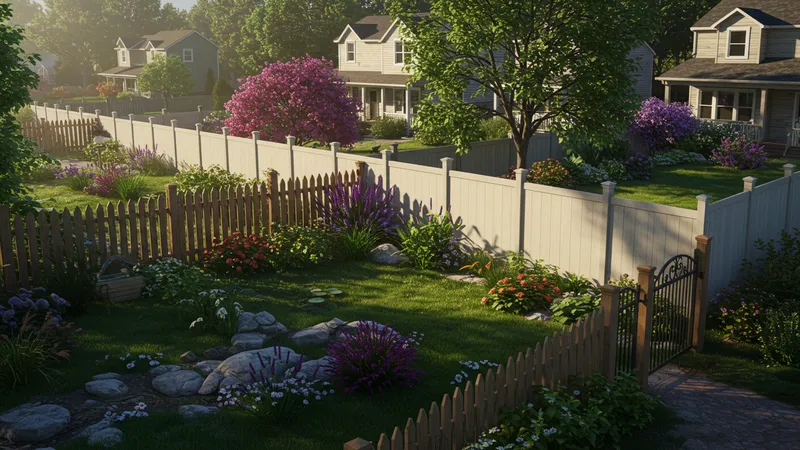
Pressure-treated wood fences remain popular in American neighborhoods for their traditional charm and affordability. Homeowners appreciate their adaptability—paint them, stain them, or leave them natural. This material is widely available at retailers like Home Depot, and treated options resist rot in wetter U.S. climates. However, they demand routine maintenance and may weather over time, especially in harsh environments.
Vinyl fencing offers a clean, crisp look that’s immune to insect damage and is a favorite in regions prone to termites. White vinyl panels are easy to rinse off and retain their color, making them a low-maintenance solution for busy families. Though the upfront cost is higher than wood, U.S. households see long-term savings due to the minimal upkeep required—making vinyl one of the fastest-growing fence choices coast-to-coast.
Galvanized steel wire fences serve two core needs: security and visibility. Perfect for vegetable patches and pet zones, these fences excel in the Midwest and rural areas where protecting produce or livestock is key. The steel is coated to resist rust from rain and snow, and these fences are surprisingly easy to install. Their see-through design also helps gardens feel open and inviting while keeping critters out.
Location and purpose are critical. Some neighborhoods in the United States enforce height, color, and style regulations through HOAs, while rural and suburban areas grant more flexibility. Weighing privacy, price, durability, and local climate is essential for any homeowner. Next, let’s unravel how material, installation, upkeep, and neighborhood considerations can point you toward the perfect fence—sometimes in surprising ways. The deeper details reveal even more valuable insights ahead…
When choosing fencing, understanding how different materials stand up to the U.S. climate is essential. Wood may warp or rot in high-humidity zones, while vinyl can withstand heavy rain, snow, and sunlight without fading. Steel wire, commonly used in American agricultural areas, resists corrosion due to its galvanized coating. Factor in pest prevalence—particularly termites across the South—and opt for materials designed for resilience when local conditions demand it.
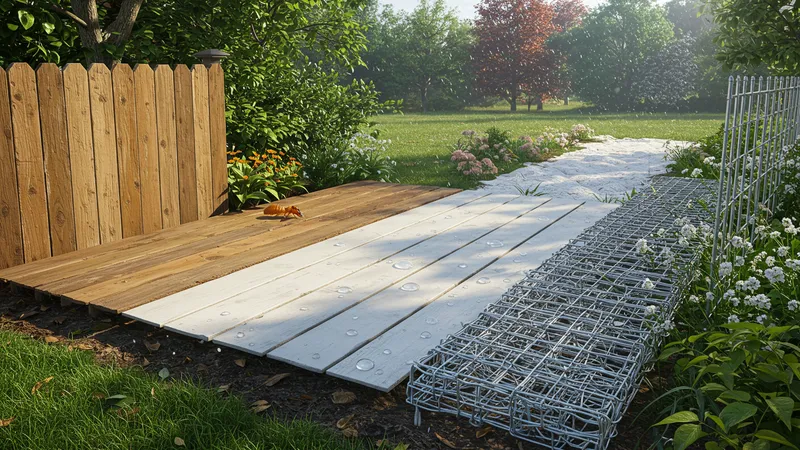
Another consideration is longevity. Pressure-treated wood typically lasts 10-15 years if maintained, while vinyl fences often last for decades with little to no attention. Steel wire fencing, with proper installation and occasional tightening, can serve reliably for over 20 years. Carefully assess long-term value rather than only immediate costs, as replacement and repair can outweigh a slightly higher initial investment.
Maintenance often shapes the real cost of a fence. Wooden fences in the United States need repainting or staining every few years, as well as vigilant monitoring for deterioration. Vinyl fences need only an occasional wash with a hose, though extreme impacts can crack the panels. Steel wire fences require tightening and may need to be patched where animals or the weather have bent the structure. Maintenance-friendly materials can reduce stress and ongoing expenses.
U.S. regional extremes create unique demands: hurricane-prone areas require wind-resistant designs, while desert regions need UV-stable materials. Always consider how the chosen fence will cope with frost heave, salt spray, or drought—each state presents challenges. Weighing these durability factors ensures your fence maintains both beauty and function for years, inviting further exploration of installation techniques that make a difference.
Garden fence installation can be a straightforward weekend project or a complex construction task, depending on material and landscape layout. Wood panels and steel wire fencing are frequently installed by DIY-oriented homeowners, especially in suburban and rural regions. Many Americans rent or borrow powered augers to dig precise post holes, improving stability. For those less experienced, some retailers offer in-house installation or trusted contractor referrals to handle every detail.
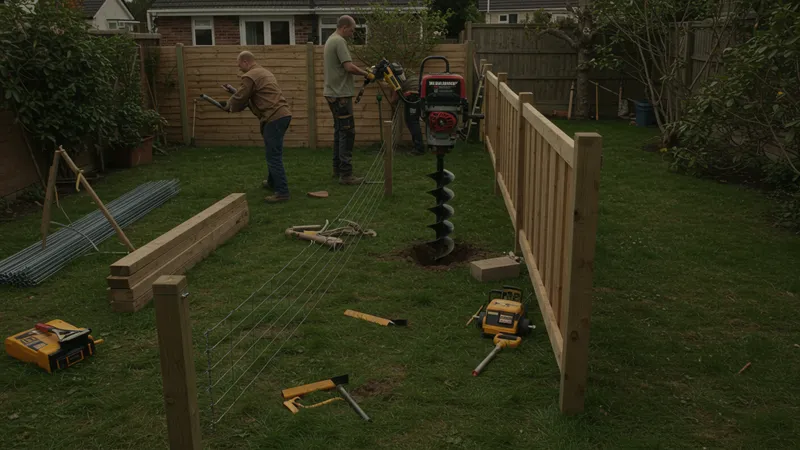
Labor costs are a significant factor for budget planning. In the United States, professional fence installation fees typically range from $15–$50 per linear foot, depending on material and regional labor rates. Vinyl and steel wire are often faster and require less labor compared to custom woodwork, which increases the final cost. For large or sloped yards, professional installation often delivers better alignment and visual consistency across long runs.
Proper installation ensures posts are set below the frost line to reduce shifting in cold U.S. climates. Techniques like gravel backfilling and secure anchoring help prevent future leaning, especially with heavier wood fences. In regions with expansive clay soils, using concrete footings improves longevity. These details distinguish sturdy, lasting fences from those that warp or topple after a single season of rough weather.
Permits and neighbor relations are also part of the installation process. Many municipalities require permits for new fences, especially above certain heights. It’s a common courtesy in American neighborhoods to discuss fencing plans with adjacent homeowners, preventing disputes. As each region offers unique challenges and requirements, moving forward, understanding maintenance needs is key to long-term satisfaction.
U.S. homeowners soon discover that the lifespan of a fence is only as long as their commitment to regular upkeep. Wooden fences, while timeless, need seasonal inspections for loose boards, splinters, and signs of rot. Most experts recommend applying a sealant or outdoor paint every 2-3 years, especially in areas with freezing winters or heavy rainfall. Skip this routine, and the panels may warp or attract pests, reducing curb appeal and function.
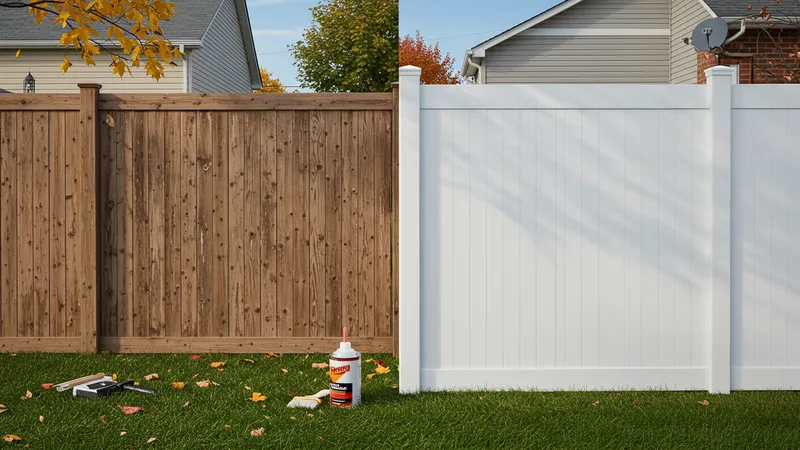
In contrast, vinyl fencing’s maintenance advantage is a major selling point nationwide. Its non-porous surface resists mold and doesn’t require painting, so even homeowners in humid coastal states enjoy bright, intact panels year after year. Inspection is still important, as extreme impacts from falling branches or errant soccer balls in suburban yards may crack panels. Fortunately, replacement boards are widely available at U.S. retailers.
Galvanized steel wire fencing stands up to rain, snow, and humidity, but it’s smart to check for slack lines and ensure anchor posts remain solid. Some animal owners electrify wire fences for added security, common in rural parts of the United States. While wire rarely rusts when coated, any scratches or cuts should be sealed with rust-inhibiting paint to prolong the fence’s lifespan.
Thoughtful maintenance planning can save money and time. Creating a seasonal task list, scheduling annual inspections, and quickly addressing repairs will prolong any fence’s life—maximizing the return on your initial investment. Looking ahead, local regulations and neighborhood style guidelines present one more layer of complexity for U.S. homeowners selecting the ideal fence.
Many U.S. cities and suburbs mandate fence height, style, and material—especially for properties with street frontage. Homeowners associations (HOAs) often specify approved fence colors and designs to maintain neighborhood uniformity. Ignoring such rules can trigger costly and time-consuming modifications, so it’s important to contact local zoning offices or review HOA covenants before finalizing a fence purchase or plan.
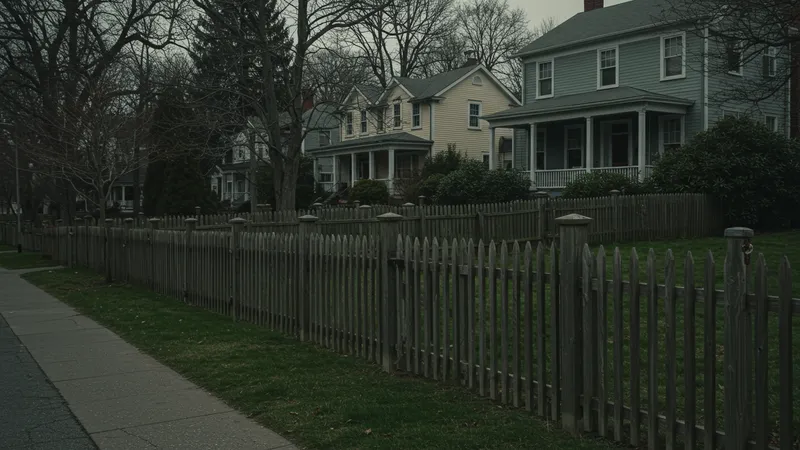
Historic districts and older neighborhoods frequently enforce stricter guidelines to preserve community aesthetics. In these cases, wood picket or wrought iron might be the only allowed materials, while newer developments might embrace vinyl or decorative steel. Researching nearby properties helps determine what’s customary, and seeking approval for unique designs avoids conflicts with neighbors or penalties from local authorities.
Regional wildlife, landscaping customs, and property slopes also influence fence selection in the United States. For example, higher fences might be necessary in rural areas with deer activity, while lower fences suffice in urban gardens with minimal wildlife concerns. Utilizing native plants and landscaping alongside fences creates natural transitions that satisfy regulations while enhancing beauty and utility.
Ultimately, the most successful garden fences reflect both the homeowner’s tastes and the requirements of their unique location. By staying informed and proactive, U.S. property owners select fences that stand the test of time. Combining careful planning, smart material choice, and respect for local rules ensures your garden boundary will delight and protect for years, providing enduring satisfaction and value.